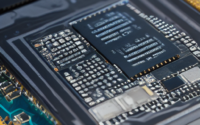Advancements in self-driving vehicle development through simulation tools
Advancements in self-driving vehicle development through simulation tools
Introduction:
Self-driving vehicles have the potential to revolutionize transportation by providing safer, more efficient, and convenient means of travel. However, the development of autonomous vehicles involves numerous technical challenges, including testing in real-world conditions to ensure their reliability and safety. Simulation tools have emerged as a crucial component in this process, enabling engineers to design, test, and validate self-driving algorithms in a virtual environment before deploying them on actual roads.
Benefits of Simulation Tools:
Simulation tools offer significant advantages in the development of self-driving vehicles. They allow for rapid and cost-effective testing of various scenarios that would be challenging, dangerous, or simply impractical to replicate in the real world. With simulation, engineers can create virtual environments that mirror real-world conditions, such as urban or highway driving, adverse weather, and complex traffic scenarios. This enables them to assess the performance of autonomous systems in a wide range of situations without putting actual vehicles or pedestrians at risk.
Types of Simulation Tools:
There are several types of simulation tools used in the development of self-driving vehicles, each serving a specific purpose in the design and testing process. Virtual environments can vary from simple 2D models to highly realistic 3D simulations that include dynamic objects, pedestrians, and other vehicles. Some tools focus on sensor simulation, replicating the input received by cameras, LiDAR, radar, and other sensors mounted on autonomous vehicles. Others specialize in scenario-based simulation, allowing engineers to create and evaluate complex driving scenarios to assess the behavior of self-driving algorithms.
Integration with Machine Learning:
Simulation tools play a vital role in the training and validation of machine learning algorithms used in self-driving systems. By generating vast amounts of synthetic data, engineers can improve the performance of neural networks and other AI models that power autonomous vehicles. Training these models in simulation can help them learn to react to varying conditions and unexpected events, enhancing their robustness in the real world. Furthermore, simulation tools enable continuous testing and refinement of machine learning algorithms without the need for physical prototypes, accelerating the development cycle of self-driving technology.
Challenges and Limitations:
While simulation tools offer many benefits, they also have limitations that must be considered in the development of self-driving vehicles. Virtual environments may not always accurately replicate the complexities and uncertainties of the real world, leading to discrepancies between simulation results and actual performance. Ensuring the fidelity of simulations and validating their predictive capabilities are ongoing challenges that engineers must address to increase the reliability and safety of autonomous systems. Additionally, integrating simulation tools with physical testing remains crucial to verify the performance of self-driving algorithms in real-world conditions.
Future Directions:
The use of simulation tools in self-driving vehicle development is expected to grow in the coming years as technology advances and new solutions emerge. Enhanced virtual environments with increased realism, adaptive traffic models, and improved sensor simulation capabilities will further enable engineers to test and refine autonomous systems efficiently. Furthermore, the integration of simulation tools with cloud computing and AI algorithms will accelerate the training and validation of self-driving technology, paving the way for the widespread adoption of autonomous vehicles on our roads.



